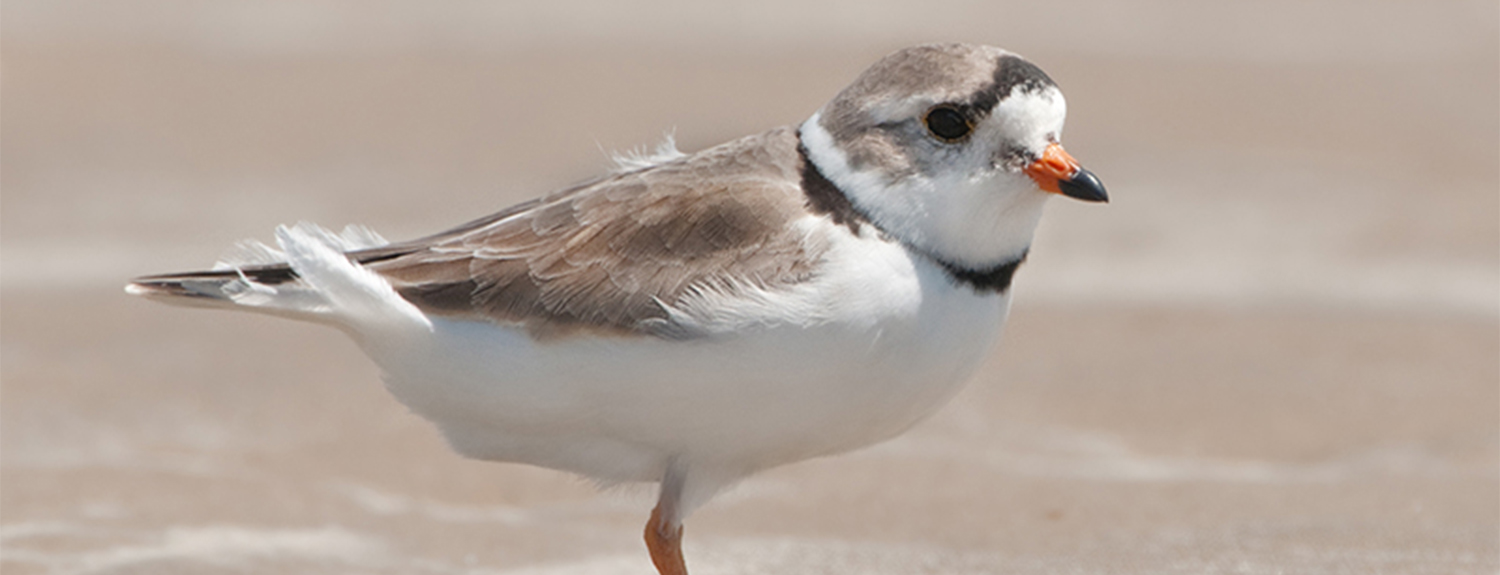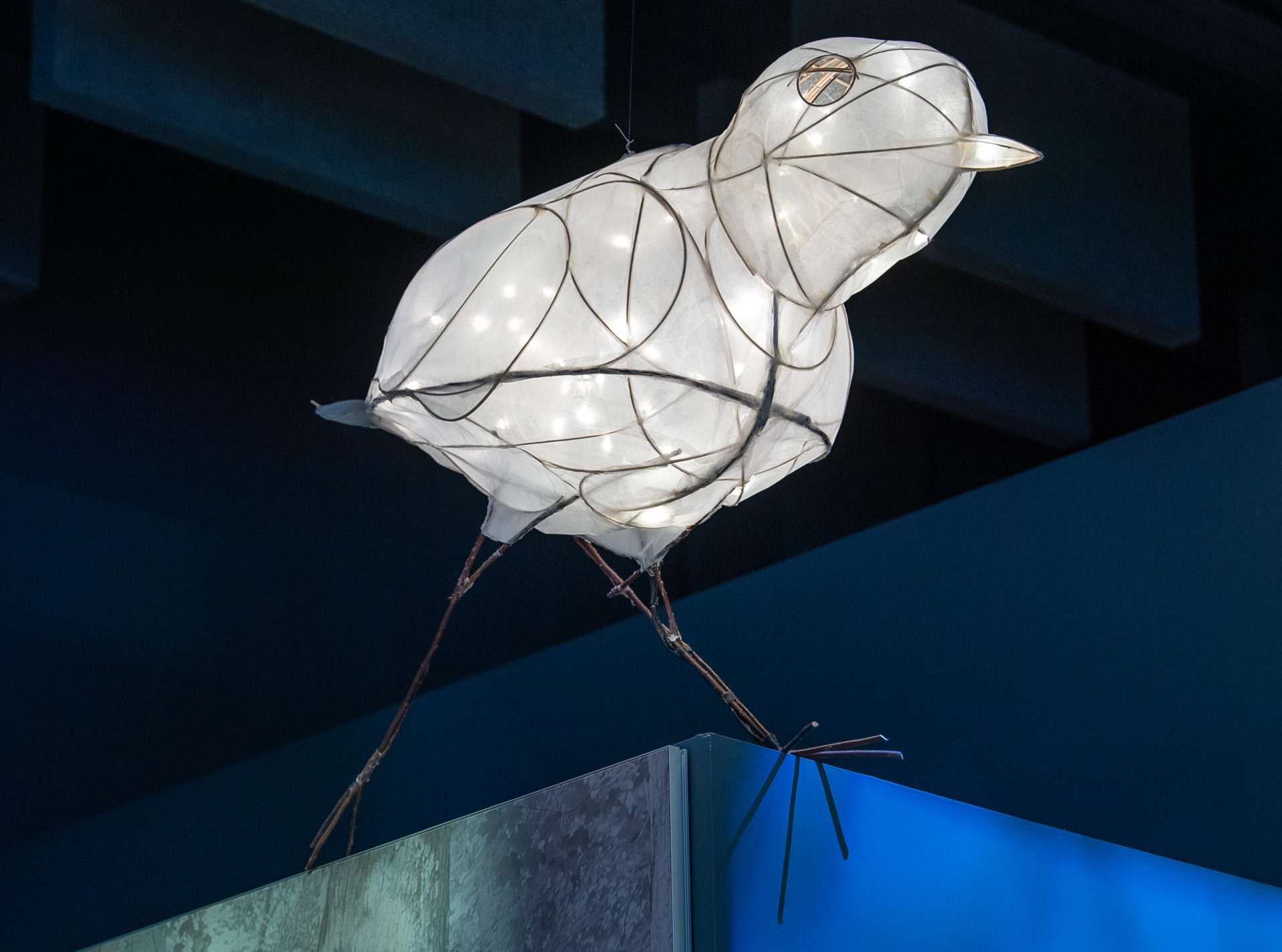
Happy Plover Appreciation Day!
Plover Appreciation Day is September 16! Who says science can't be cute?
Published09/14/2020 , by Anna Cerelia Battistini, RARP resident artist in 2019–2020
When people ask why I chose to make artwork celebrating the piping plover during my residency at the Bell, my shortest answer is this: “it’s one of the cutest birds I have ever seen!” If you’re feeling blue, do yourself a favor and search for images of “baby piping plover.” I guarantee they will make you smile: they are little cotton balls with toothpicks for legs.
Of course, I don’t believe that saving endangered species should be a beauty contest, but as an artist, I can attest that you really can’t get much better than the compact, graceful lines of these birds. As a part of my process, I like to draw my subjects several times, with different media and in all different sizes. I am a sculptor, so the drawing is not usually the finished product. It is, rather, a tool that I use to become familiar with the structure, movement, and personality of my subject. When I began the plover project, I found one photo of a plover on the move. There was something about its off-kilterness that told me that this little bird was moving confidently and at speed on its tiny little legs. Even though it was on the ground, I felt a sense of its aerodynamics and center of gravity. So I drew from this photo, and this is the drawing that I chose to be the basis of my sculpture. Once I had a drawing that I liked, I set to scaling up my drawing to the size that I wanted the finished sculpture to be. Yes, it’s true: I am an artist, and math is essential to my work!
The most important thing that I learned from my residency is that, as cute or pretty as the baby chicks and flowers I took as my subjects might be, that cuteness is not really the story. The risks to endangered populations in Minnesota are the story, and the focus must be on maintaining, restoring, and preserving habitat. Individual species are at risk are a symptom of larger systematic problems such as pollution, loss of habitat due to human development, and climate change. The piping plover illustrates this point well. Intense habitat recovery programs in Michigan, where most of the plover’s breeding sites are found, have successfully revitalized the piping plover population across the Great Lakes. More work needs to be done to reach the goal of a sustainable breeding population, but this story of an endangered population and intervention to help it gives me hope.




